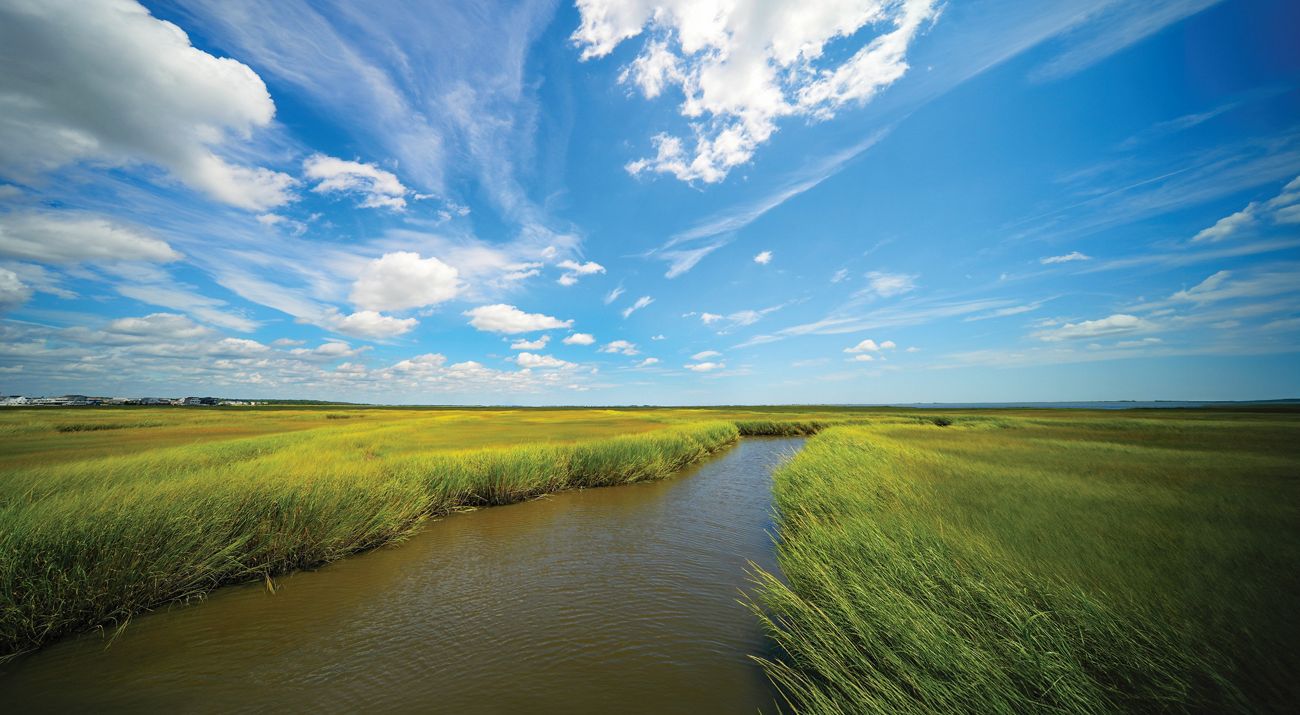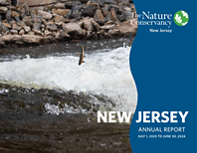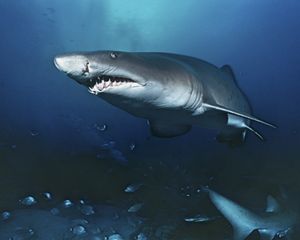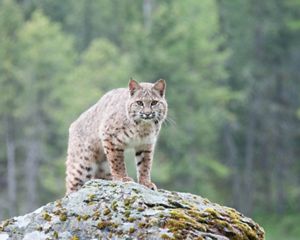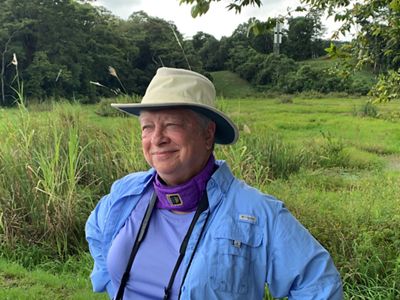
From the Director
Dear Friends,
Our annual report for 2024 contains many meaningful milestones and accomplishments that you helped make possible, and one of the most resonant for me was our successful removal of the Paulina Dam on the Paulins Kill. During a site visit earlier this year while the dam still stood, I witnessed shad and other fish jumping and wriggling with all their might to try to overcome the concrete barrier and swim to their historical spawning habitats. The scene in many ways seemed a metaphor for conservation.
We work relentlessly on behalf of nature, and, like the shad, sometimes we “bump our noses” against some obstacles. But we must push on to survive, to stem biodiversity loss and tackle climate change challenges, and eventually—even if it takes time, some leaps of faith and a little help from friends to succeed like those fish ultimately did—we will prevail.
Remember that your support is the current that keeps our conservation efforts moving! Thank you on behalf of the entire Nature Conservancy team for catalyzing so much progress for nature in New Jersey this year. Together, we are protecting and connecting our state’s Appalachian landscape in Bobcat Alley, a resilience stronghold of continental importance for wildlife and people. We are freeing New Jersey’s rivers from hazardous, outdated dams, and restoring the defenders of our coast—salt marshes—so they will continue to protect communities and sustain marine life.
Together, we are planting trees and building parks in New Jersey’s cities to combat excessive heat and flooding for some of our state’s most vulnerable populations. And we are enhancing TNC’s five flagship preserves to make nature’s many benefits more accessible to all.
You are a critical part of our team. Please join us in celebrating this year’s achievements and in continuing to take those conservation leaps with us to ensure a better future for New Jersey and the world.
Yours in conservation,
Dr. Barbara Brummer

Stay connected for the latest news from nature.
Get global conservation stories, news and local opportunities near you. Check out a sample Nature News email.
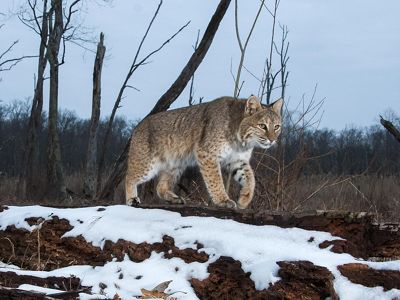
A Banner Year for Bobcats
Since we launched the Bobcat Alley initiative in 2014 – and tripled its original scope in 2022 – TNC and partners have protected 1,852 acres in the region. This year alone, we added the following parcels:
- 37 acres with the Land Conservancy of New Jersey and Warren County – a property in the heart of Bobcat Alley that has been in our sights for years as a high-value conservation target
- 18 acres with the Land Conservancy of New Jersey to expand the Hardwick Meadows Preserve, which TNC originally protected and is now managed by the New Jersey Natural Lands Trust
- 42 acres adjacent to the Columbia WMA and the site of the former Columbia Dam, where we created a new, safer and more pleasant route for a hazardous section of the existing September 11 National Memorial Trail
Working with partners, we aim to protect 15,000 acres in Bobcat Alley by 2030. Each acre we protect helps us to preserve forest connectivity along the Appalachian range, providing migrating wildlife with room to roam as they adapt to our changing climate.
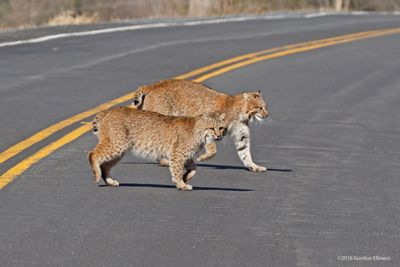
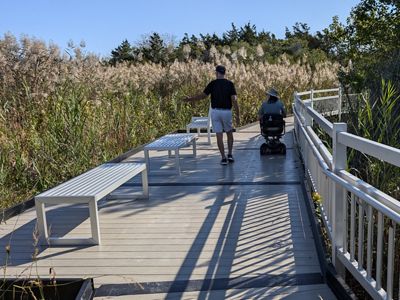
Preserves
Accessible Upgrades
At South Cape May Meadows, in partnership with the Knipper family, we built a half-mile long all-persons Boardwalk Trail that opens previously inaccessible portions of the preserve and provides guests with elevated birding and nature viewing opportunities. The fully ADA-compliant raised boardwalk was sustainably constructed using recycled plastic and aluminum and features many accessibility-minded details, including a six-foot-wide, stable surface that is navigable by assistive devices like wheelchairs and strollers; handrails, benches and pulloff areas; signs in English print and braille with three-dimensional sensory elements; and trail maps adjusted with design and tactile features for easier use by people with low or no vision. All interpretive signs are also available via QR code scan in Spanish, French and Chinese. The preserve’s entrance also now welcomes visitors with fun oversized bird tracks leading to a fully ADA-compliant digital kiosk showing site history, trail map, interactive bird calls, surveys and more.
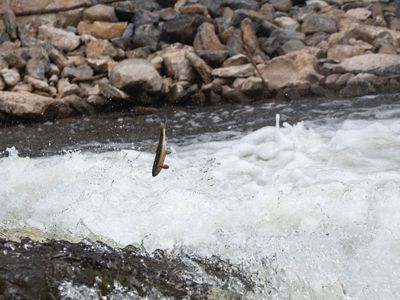
Rivers
Buh-Bye, Paulina!
The Paulina Dam, TNC’s final dam removal on the Paulins Kill, is complete! The aging dam in Blairstown was classified as a “significant hazard” by the state and would have required costly repairs. Instead, the town asked TNC to lead its removal.
After several years of design and engineering, we notched the Paulina Dam in late November 2023. Cutting out a section of the dam allowed us to lower the water levels gradually and regulate the flow of sediment behind the dam structure to protect habitat downstream. Over the winter and spring, the remaining sediment consolidated and solidified. In July, we began removing the excess sediment and the remainder of the dam.
We are already seeing fish excited to return to their historic spawning grounds upstream! In total, the removal of four dams including the Columbia remnant and main dams (2019), County Line Dam (2022) and Paulina Dam has reconnected 45 miles on the Paulins Kill and its tributaries.
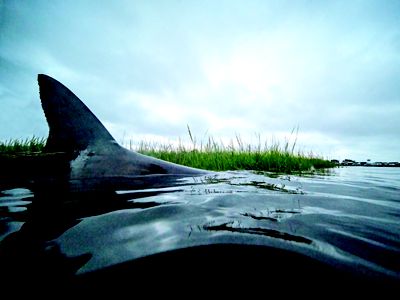
Coasts
Sh-sh-sh-Sharks in the Estuary!
Our first year in partnership with Monmouth University researching how sharks use New Jersey’s back bays and salt marshes yielded results that emphasize the importance of coastal habitats and inform how we need to approach conservation management for certain species.
The team tagged 20 sandbar sharks (plus other species) in Great Bay in 2023 and will monitor their movements over several years. Preliminary data shows the sharks spent an average of about 28 days in the bay, with some staying in residence for more than 60 days. Most were immature juveniles that rely on the rich resources of the salt marsh to thrive and grow away from large predators; of the mature sharks we followed, the majority were females who likely entered the bay to give birth. In the fall, six of the sharks were detected as far away as Georgia and North Carolina! We will continue tagging, monitoring and analyzing movement of sandbar sharks, sand tiger sharks and smooth dogfish in New Jersey’s back bays to help shape our salt marsh restoration actions.

Greening Our Cities
Expanding the Newark Tree Canopy Initiative
The City of Newark, The Nature Conservancy, and community-based and academic partners developed the Newark Tree Canopy Initiative in 2023 to address Newark’s low, 14.8% tree cover, which contributes to the second-worst urban heat in the nation, poor air quality and other health concerns. TNC helped the City of Newark secure a grant from the NJ Department of Environmental Protection, funded by the Regional Greenhouse Gas Initiative, to start the project and worked with a coalition of partners (see full list on right) to secure an additional $8 million grant from the U.S. Forest Service’s (USFS) Urban and Community Forestry program. The funding empowers our coalition to develop an urban forestry master plan for Newark, plant more than 2,700 trees and engage approximately 200 local residents in a workforce development program in urban forestry and tree stewardship. Most recently, TNC assisted the City of Newark in securing $862,500 through a NJDEP Leafing Out Management grant to support an inventory of the city’s existing trees and plant additional trees.
Seed funding from private donors allowed TNC to develop the relationships – and the Newark Greenprint tool – that made this exciting initiative possible!
